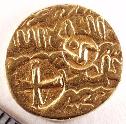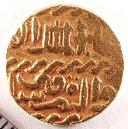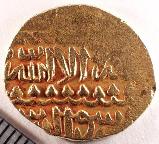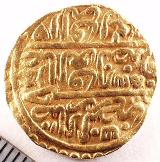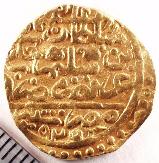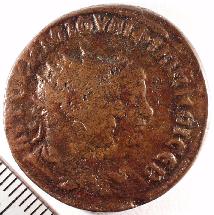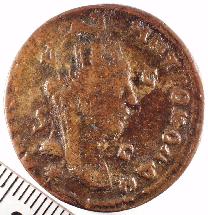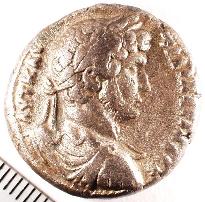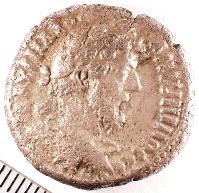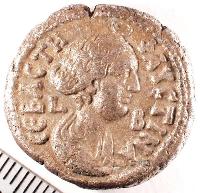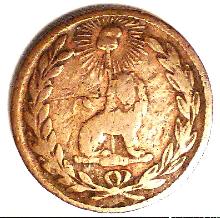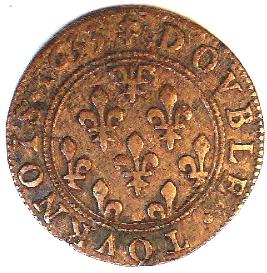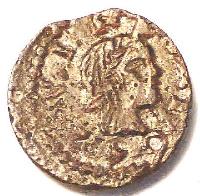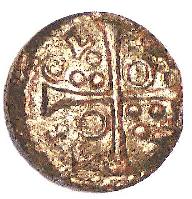Chatter
archive
also available
| Chicago Coin Club |
|---|
| Volume 47 No. 6 |
June 2001 |
|---|
Minutes of the 988th Meeting
The 988th meeting of the Chicago Coin Club was called to order on May 9, 2001 at 7:02PM by President Carl Wolf.
A motion was made, seconded and passed to, and approve the minutes of April 11, 2001.
Secretary/Treasurer Lyle Daly gave a treasury report as follows:
| Dreyfus Money Market |
$1792.31 |
| Bank One CD |
1357.09 |
due 9/01 |
| Bank One CD |
1355.17 |
due 7/01 |
| TCF Checking Account |
2832.53 |
| Un-deposited Funds |
32.00 |
| TOTAL |
$7369.10 |
President Carl Wolf introduced 2nd time guest Stephen J. Huber. Steve's interests are still in US coinage and German Talers.
1st Vice President Robert Feiler introduced Steve Feller and his presentation Bank Notes from the Vault.
Mr. Feller's employer, the Western College in Cedar Rapids, Iowa,
asked him to review a series of banknotes that were discovered in their vault.
The notes included a $7 Continental Currency, French Revolutionary, Mexican Revolutionary (2),
Canadian, Swedish and Nebraska Broken Bank notes.
Also included was a piece of Chinese knife money.
These were interesting but the papers in which they were discovered revealed a letter from famous numismatist
B. Max Mehl to a Reverend Louis Bookwater.
Mr. Feller was able to trace the history of the Reverend through college records
and determined that he traveled extensively after his retirement and had taught in China.
Evidence indicates the notes to be his and a donation to the university upon his death.
Mr. Feller finished a few minutes early and discussed his trip to the Isle of Mann to study Internment Camp Script.
Throughout World War II, Mann was used as a camp for German nationals and later as a prisoner of war camp.
1st Vice President Robert Feiler presented Steve Feller with the featured speaker award and an ANA educational certificate.
Second Vice President Don Dool introduced the following individuals, who presented material during the meeting's Show and Tell:
-
Reid Geisler presented a Roman coin of Constantine found in circulation!
He also presented a counterfeit state quarter, a New York quarter on a cracked planchet,
a New York quarter on a dime planchet, and a set of off center North Carolina quarters.
-
Dick Hamilton presented the Bulgarian War bond he has been attempting to translate for several months.
A translation revealed this to be a 100,000 Leva "Jewish Indemnity Bearer Bond".
-
Carl Wolf presented Brick Tea money. This form of primitive money is from Tibet and China.
-
Bob Feiler presented a counterfeit Morgan dollar, a 10,000 mark Notgeld coin,
and the largest and smallest silver coins of the 20th century.
-
Mike Metras presented selections from his collection of "coins that feel like coins".
This included a Chinese 50 cash coin, a Roman coin of Ptolemy, a 1797 2 Pence, a large US cent,
a Maria Theresa Taler, a 10,000 mark coin and a Katanga cross.
Mike also presented his computer generated 1964 Peace Dollar to remind all to be aware of what can be advertised on the internet.
-
Bob Leonard presented coins from the Middle East, from the late 15th and early 16th centuries.
-
Steve Huber presented a six coin proof set that included 1 half-, 2 one- and 1 two-Taler coins
and 2 twenty mark coins that were owned by the Royal Family of Schaumburg Lippe (area in Prussia).
-
Mark Weiclaw presented a Roman bronze coin of Antioch and 2 tetradrachams from Alexandria.
-
Don Dool presented two Paraguayan 1845 1/12 reals, one from the Heaton mint and one from Asuncion,
and two purchases from CICF; a 1633, double tournois French provincial from Phalsbourg
and Lixheim and a 1642 menut issued by the Catalonian city of Oliana during the French occupation.
The second reading for membership was made for Steve Huber, Mark Holmes, Richard Craig, John Wright and Cheryl Raff.
Motions were made, seconded and passed to admit Steve Huber, Mark Holmes, Richard Craig,
John Wright and Cheryl Raff as members of the Chicago Coin Club.
Old Business:
The CCC presentation description was accidentally omitted from the CICF program.
Club members printed self adhesive labels describing the presentation and applied them to the program.
A motion was made, seconded and passed to pay for these labels out of the club treasury.
Carl Wolf relayed an incident that occurred at CICF in which an individual attempted to steal from the bourse admission stand.
This individual returned the next day (after making bail?) and inquired about club membership.
All members should be aware of this and verify all inquiries for membership.
New Business:
Mark Weiclaw commended the professionalism and willingness of the CICF speaker, David Hendin, to share information.
A motion was made, seconded and passed to allow the Club Secretary Lyle Daly to cast the club vote for CCC members only,
for ANA President, Vice President and Board member positions when the ballot arrives.
Respectfully submitted by Lyle Daly
Speaker's Wor[l]d
Forgotten Bank Notes from the Vault
Presented by
Steve Feller
to our May 9 meeting.
One day, while Steve was at work at Coe College in Cedar Rapids, Iowa,
the college's business office phoned him and asked,
"We were searching the vault and came across a
tattered envelope with some old bank notes in it.
Would you be interested
in seeing them?"
Of course he was!
The first note in the bunch was a crisp unc $7 Continental Currency
Baltimore series of February 26, 1777 (25,000 issued).
No more notes were issued in Baltimore because
soon thereafter, the British evacuated Philadelphia and the
Continental Congress moved to there.
The next note was from the French Revolution;
many are quite common today, and readily available to collectors.
At this point Steve passed around the current issue of the IBNS journal
(Steve is the editor), and mentioned that he had written an article
about this find for a previous issue.
This talk did not just list each note and tell something interesting about it;
Steve also recounted what he was thinking as he examined the group,
and the questions he was asking himself.
The hunt for answers to those questions was both entertaining and
a review of a good approach to research.
Two well worn 1915 notes from the Mexican Revolution, 5 and 20 pesos,
were not particularly valuable,
but were of great historical interest.
A crisp $1 Canadian note was next;
although all modern Canadian notes use both French and English together,
at that time the same note design would be issued in two styles:
all English and all French.
Nebraska is just west of Iowa, so a well used 1856 $1 issued broken bank note
was not a surprise in this group.
It was from the Fontenelle Bank of Belleview, Nebraska Territory.
A surprising piece in this group was a piece of Chineese Knife money,
attached with screws to a block of wood.
Unfortunantely, the screws were tightened so much that the piece of money cracked.
Steve estimated the group as worth $500 to $1000, with most of the value in just a few pieces.
But where did the group come from?
As Steve returned the items, he asked if there was anything else.
As the staff placed the items back into the original box, they replied,
"No, just a few papers."
A letter, dated Nov. 10, 1932, from B. Max Mehl to a Mr. Bookwalter.
On Mehl's letterhead, the body had both left and right margins flush
and appeared to be printed,
while the salutation was typed.
(Steve and some members wandered off on a tangent,
wondering if Mehl's signature were made by machine or Mehl's own hand.)
The body of the letter consisted of some circumspect comments on the result
of the recent US presidential election,
and then congratulated the addressee on winning some lots in a recent auction.
However, the lack of invoice or packing list provided no clue as to the
collecting interests of Mr. Bookwalter.
And who was this Mr. Bookwalter?
Steve's search of college records turned up a Reverend Louis Bookwalter;
Western College, class of 1871 and president 1894-1904.
(Western College was a predecessor of Coe College.)
We saw his donation card kept by the alumni association,
and his obituary told how he had travelled the world at age 72,
and had taught for two years in China.
He died on November 30, 1935.
The group we saw could have been acquired through his travels,
or it might have been a life-time of mementos.
There was no mention of the rest of his collection,
or what ever happened to it.
This was a good example how one fact can lead to another, and then another;
what can be found by just scratching the surface.
That theme was followed in the last part of Steve's talk,
about notes from World War II internment camps on the Isle of Mann.
He and a student had gone there to investigate,
resulting in an article in The Numismatist.
An initial visit to the Manx Museum to view their wonderful
collection of camp notes was followed by a visit to some of
the buildings used as internment camps.
There were at least 10 Manx camps, all constructed along the
same lines;
take a large Victorian era hotel (or row of hotels), and place a fence around it.
Most are still used as hotels today.
Steve recounted his direct way of doing research;
go to a hotel and ask,
"Did you know this was a camp?
Do you have anything from that period?"
The reply at the first hotel was, "Yes. We were just clearing out the floorboards;
care to have a look?"
Steve left that hotel with a plastic bag of items,
icluding Red Cross stickers from parcels,
and a German language camp newspaper announcing an Atom bomb drop.
The visit to the next hotel yielded no items directly,
but Steve was directed to the previous manager who had a large collection
(this fellow was also the source for much of the collection at the Manx Museum),
and then Steve was introduced to the foremost numismatist of the area.
So Steve and his colleague scanned like crazy.
Steve concluded by explaining how his interest in collecting Concentration Camp money
led him to Internment Camp money,
and in response to a question stated that of the 500 camps in the US,
60 are known now to have issued money.
Show and Tell
Each image has a scale in the lower-left corner,
with the tics spaced 1 mm apart.
Because the brightness and contrast were manipulated on a computer,
the coloring of a coin's image differs from the coin's actual coloring.
-
Reid Geisler
started us off with items recently acquired from circulation and commerce:
-
A Roman coin of Constantine, found in suburban Chicago.
It was received as a Lincoln cent.
-
An atrocious attempt at counterfeiting a US state quarter.
It has no reverse image, and the obverse is incuse.
-
A real New York state quarter struck on a planchet with a crack.
-
Another New York state quarter, but this time the Statue of Liberty
is perfectly centered on a dime planchet.
-
A group of six off-center North Caroline quarters, struck off-center
in different directions.
-
For many months,
Richard Hamilton
has been trying to translate a Bulgarian Bond that had been mailed to the
club's Post Office Box last year.
This 50,000 Leva bearer bond paid no interest intially;
each coupon would return principal.
An overprint indicates that a 3% interest rate was paid starting in 1946.
These Jewish Indemnity War Bonds are known in denominations from 1,000 to 100,000 Leva.
The stories he told of trying to translate the bond were entertaining,
and Richard's final identification of this post World War II bond as intended to compensate
Jewish people for property confiscated earlier
brought some further observations from our featured speaker for the evening, Steve Feller.
-
Carl Wolf
exhibited an example of Brick Tea Money acquired at the CICF.
Tea compacted into bricks served as currency in Asia during most of the 19th century and into the late 20th century.
Chinese companies produced these tea bricks,
but the Russians and English also set up factories in China to manufacture this unusual currency.
The process was simple.
Tea leaves were sun-dried, beaten with sticks on hot plates, sifted, steamed over boiling water,
pressed into moulds and left to dry for several days.
The bricks seen here each weigh 2.5 pounds and were created sometime after 1949 when
Communist China came to power and began to control production.
The front shows a gateway with a star, trees on both sides and at the bottom a two-line inscription in Chinese.
The first line reads "China National Tea Corporation," the communist state owned tea monopoly.
Line two reads "Made by the Zhaoliqiao Brick Tea Factory."
Zhaoliqiao is a town in southeastern Hubei Province where these tea bricks were first produced.
At some point production moved to Shanghai, but the name remains.
The backside shows a grid subdividing the brick into sixteen equal parts allowing it to be broken into fractions.
The same moulds were used from 1949 to present day, so a modern piece
cannot be dated to any particular year.
The size and weight of brick tea made it an inconvenient medium of exchange,
but at one time it was the ordinary currency of Asian traders and travelers.
A tea brick was not merely worth a rupee - it was a rupee.
It was legal tender and was accepted as readily as a silver coin.
-
Once again,
Bob Feiler
treated us to a range of items:
-
Counterfeit 1893 Morgan Silver Dollar acquired while on a trip to Pennsylvania.
-
1923 10,000 Mark German Notgeld brass token with Rearing Stallion.
-
1929 book on the Guttag collection,
and 1516-1556 Silver One Real from Mexico City Mint, Carlos & Joanna;
first coin of the Americas.
-
Two piece coin set from Panama in a custom Capital Plastic holder.
"Largest and Smallest Silver Coins of the 20th Century" Consisting of:
one very large (2½ inch) diameter proof silver 20 Balboa dated 1971 and one
extremely small 2½ Centesimo dated 1904, "The Panama Pill".
-
Mike Metras
used coins that feel like money as his theme.
He showed, and passed around, the following pieces:
-
Chinese 50 Cash
-
42 mm bronze coin of Ptolomy IV
-
Roman As Grave
-
1798 British Two Pence
-
Large Cent
-
Maria Theresa Thaler
-
Katanga Cross
Mike also showed an image of a US silver dollar date 1964;
he had created the image by combining parts of images of
dollars date 1924 and 1926.
After some discussion, he concluded with words of warning;
that there are both good and bad things out there,
at both established dealers and eBay.
-
An unattributed countermarked gold coin acquired from Spinks in London was the starting point for
Bob Leonard.
In 1489 Venice acquired Cyprus, but issued no coins for it;
countermarked silver coins of Cyprus (1512-1518), such as this one, are known.
Bob's unique coin appears at first to have a Christian cross on a Mamluk gold coin,
but it is really a counterstamped X, for ten, to revalue it to 10 Cypriot bezants, circa 1518.
The undertype is a Mamluk ashrafi of Qa'itbay.
For reference, Bob also showed an uncountermarked Mamluk ashrafi of Qa'itbay, 1468-1496,
a debased ashrafi of Qansuh II, of the type issued 1512-1515,
and an Ottoman sultani of Sulayman the Magnificent minted in Cairo 1520-1566.
Bob concluded by showing a paper on Cypriot gold countermarks
from the Numismatic Chronicle and pages from a
Spink Taisei auction catalog showing that this coin was offered for sale in
Zurich in 1991.
-
Steve Huber
visited an auction house while in Germany on business.
Finding nothing of interest after looking through much stock,
he asked if there was anything else available.
Oh, just a recent acquisition of duplicates from the
collection of the Schaumburg-Lippe Royal Family.
So he showed us some beautiful pieces from the 19th century:
1821 ½ Taler, 1860 and 1865 Talers,
1857 double Taler,
a gem 1874 20 Mark,
and a proof 1898 20 Mark.
-
Some ancient coins were shown by
Mark Wieclaw:
-
Although many bronze coins are known with family members facing each other,
Philip I and Philip II are shown with jugate busts on this coin from Antioch;
-
a tetradrachm of Hadrian with his wife Sabina on the reverse,
from Alexandria with Greek legends;
-
and another tetradrachm from Alexandria,
this one of Marcus Aurelius (161-180AD) with his
wife Faustina Jr. on the reverse.
-
Don Dool
continued previous themes with coins from South America,
and two European coins acquired at CICF:
-
Paraguayan 1845 1/12 reals
from both the Heaton and Asuncion mints.
The mintage for the local issue is 288,000 vs. 2,888,000 for the Heaton
coins.
Krause 1.1 and 1.2,
Eklund 336,
Neumann III 22532,
Yeoman 1.
Th obverse shows a lion seated before a liberty staff, within wreath;
a Liberty Cap is on the staff.
-
French provincial from Phalsbourg (Phalzburg) & Lixheim, 1633,
Double Tournois. Eklund 50, Neumann N37008, B. 1604?
Obv: HENR. D. LOR. PRIN. PHAL. ET. LIX, bust to right.
Rev: DOVBLE. TOVRNOIS. 1633, eight fleurs-de-lis. Henrietta de
Lorraine, 1630-1635.
These are listed as French feudal coins in Eklund; there are 12 states
and Don now has coins from eight.
-
Oliana, 1642, Menut. Eklund 129
Obv: VILLA 1642; head to right, laureated.
Rev: OLIANA. Cross cantoned by annulets and pellets.
Issued during French occupation of Catalonia, 1641-1652. Louis XIII.
Eklund lists about 18 cities that struck coins during this
period and rates most
of them from rare to extremely rare; this is one of the extremely rare
ones.
-
Lyle Daly
concluded the program with a brief summary of his April trip to Greece,
where he visited the Numismatic Museum of Athens
and saw some ancient hoards.
Ancient Coin Club of Chicago
by Mark Wieclaw
For those of you interested in a club specifically devoted to the
study of ancient Greek, Roman, and Byzantine coins this organization may
be of interest to you.
The A.C.C.C. is actually more of a discussion group than a traditional
club. Each month a specific topic is discussed, although there has been
some straying. So far the topics have centered on "The legionary
denarius of Marc Antony", and "The history of antoninianus".
Meetings take place in the offices of Harlan J. Berk, 13th floor of
the Chicago Temple Building, located at the corner of Clark and
Washington St.. The group meets the third monday of each month at 7:00
pm
(food ordered in) with discussion beginning at 8:00 pm
For more information contact Harlan J. Berk, LTD
(312)609-0018,
or refer to the club's web site at
http://sknapp.simplenet.com/accc/
Our 989th Meeting
| Date: | June 13, 2001 |
| Time: | 7:00 PM |
| Location: | Downtown Chicago |
| Featured speaker: | Tom DeLorey
- 1943 Bronze Cents and 1944 Steel Cents |
| |
An encore presentation of Tom's talk earlier this year in Baltimore,
as part of the ANS' Coinage of the Americas Conference.
It is the history of the two related transitional errors,
plus a previously unreported 1942 trial cent.
|
Important Dates
| June | 13 |
CCC Meeting - Featured Speaker - Tom DeLorey on
1943 Bronze Cents and 1944 Steel Cents
|
| July | 11 |
CCC Meeting - Featured Speaker - Bob Leonard on
Fruit Picker Tokens from Coast to Coast
|
| August | 8 |
CCC Meeting - Featured Speaker - to be announced
|
| September | 12 |
CCC Meeting - Featured Speaker - Bruno Rzepka on
Art of Steel Engraving
|
Birthday and Year Joined
| July |
4 |
Chester Poderski |
| July |
12 |
Flemming Lyngbeck Hansen |
2000 |
| July |
13 |
Gerard Anaszewicz |
1981 |
| July |
19 |
Terry L. Capps |
1996 |
| July |
19 |
John R. Connolly |
1997 |
| July |
19 |
Richard S. Hamilton |
1986 |
| July |
20 |
Kermit W. Wasmer |
1997 |
| July |
27 |
David Simpson |
1980 |
Chatter Matter
All correspondence pertaining to Club matters
should be addressed to the Secretary and mailed to:
CHICAGO COIN CLUB
P.O. Box 2301
CHICAGO, IL 60690
Visit Our Web Site
http://www.ece.iit.edu/~prh/coins/ccc.html
Contacting Your Editor
Paul Hybert
ECE Dept, IIT
3301 S. Dearborn
Chicago, IL 60616 |
| prh@ece.iit.edu |
| 1-312-567-3976 |
Club Officers
| Carl Wolf | - President |
| Robert Feiler | - First Vice President |
| Donald Dool | - Second Vice President |
| |
| Directors: | Lyle Daley
William Burd
Jeff Rosinia
Mark Wieclaw |
| |
| Other positions held are: |
| Lyle Daley | - Secretary Treasurer |
| Paul Hybert | - Chatter Editor |
| Phil Carrigan | - Archivist |








